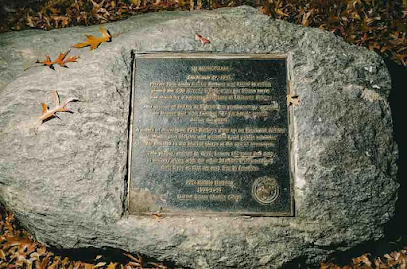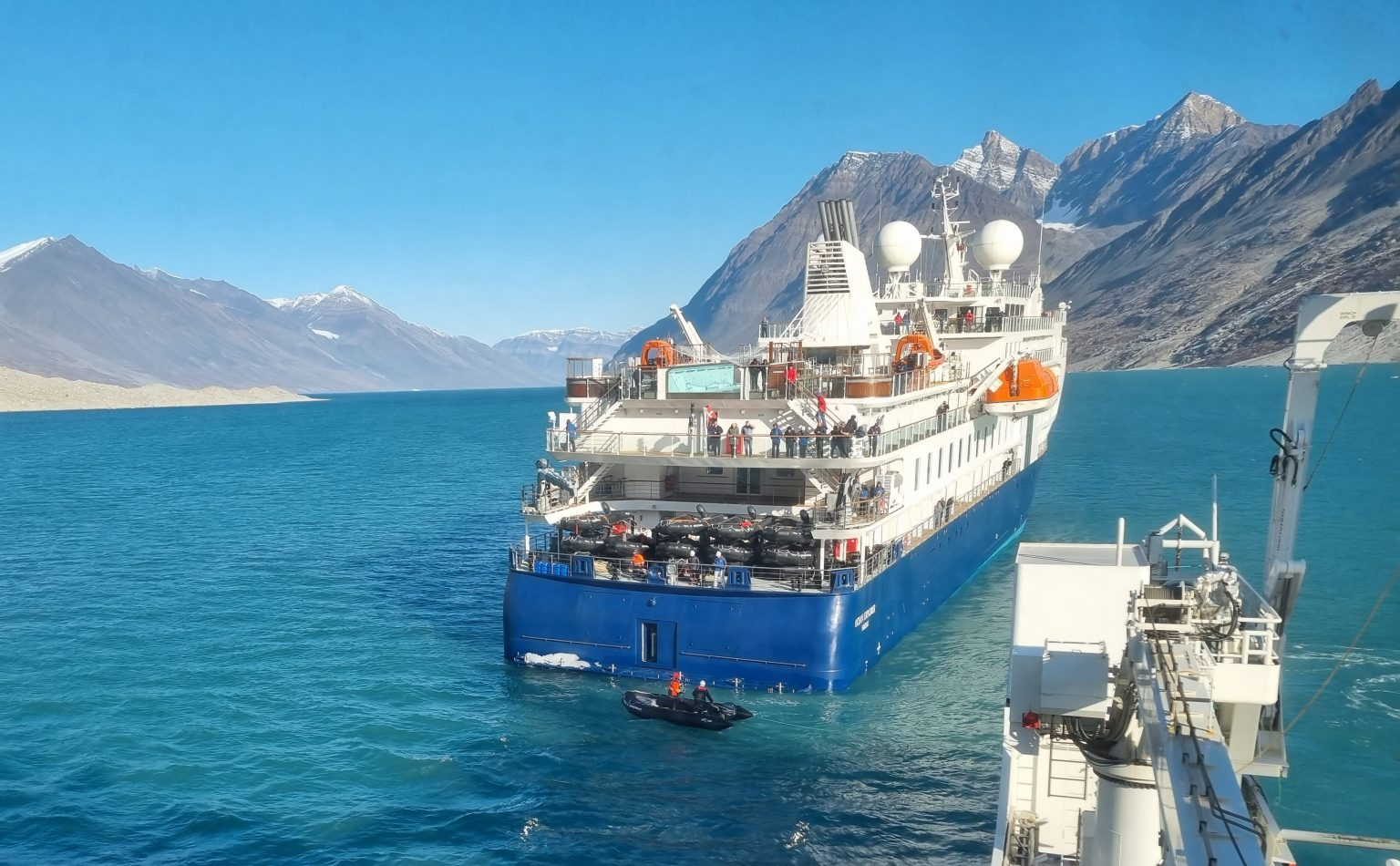Sunday, December 24, 2023
Thursday, December 21, 2023
SHE’LL BE COMING AROUND THE MOUNTAIN
Thursday, December 14, 2023
Sunday, December 10, 2023
Sunday, November 26, 2023
Farewell to the New York Times Sports Department - TomDispatch.com
Robert Lipsyte, Goodbye to All That
Though I was no athlete — or how would you explain all those grounders that went through the legs of second baseman Tom Engelhardt or why, when I got older, I so often ended up banished to, yes, right field? — I grew up in a world of sports. As a kid in the 1950s, so long before the online universe made more or less everything available, I can remember having one of those old wooden radios with the golden dials behind my bed. At night, I would keep my ear to the radio, so I could hear the Brooklyn Dodgers night games without my parents realizing I was awake. After all, I had to know what right fielder Carl “the Rifle” Furillo did, not to speak of Roy Campanella, Gil Hodges, Don Newcombe, Jackie Robinson, and so many other players of that distant era. And of course, I’d regularly check the box scores in the paper, probably the New York Post (since my mom drew political caricatures for that liberal rag of the 1950s).
I remember the thrill in high school, though still a Dodgers fan, of going to a New York Giants game and the next day finding myself in a sports photo on the back page of the New York Daily News. (Mind you, I was part of a large outfield crowd watching Willie Mays catch a fly ball and only I knew it was me in that shot.) And yes, when I got older, I read the sports pages of the New York Times, too. As the years went by, that was the place I regularly turned to in the morning before even paying much attention to the front-page news. (I mean, honestly, what could have been more important than the latest in sports, especially when it came to my teams?)
And somewhere in those years, I undoubtedly began reading Robert Lipsyte. After all, when, in 1957, the Dodgers announced that they were deserting the Big Apple for Los Angeles, I felt bereft, betrayed, and bewildered. Then, in 1962, when I was 18, the Mets came to town. I naturally Metified in a major way — and one of the New York Times sportswriters assigned to cover the team that first year was… yes, Lipsyte. And we met, first on the page and years later in person, and I’ve known him ever since. So, who better than that former New York Times sportswriter and columnist, TomDispatch regular, and author of SportsWorld: An American Dreamland to offer a fervent farewell to the sports section of the Times? Tom
Farewell to the New York Times Sports Department
Or Should It Be Good Riddance?
In the spring of 1957, in search of a summer job before heading west to graduate school, I answered a classified New York Times ad for an editorial assistant. The personnel clerk at the paper was condescending. Bachelor’s degrees are a dime a dozen, she told me. For their newsroom, she said, they were looking for Ph.D. candidates and Rhodes scholars. Still, sighing at her own generosity, she let me fill out the paperwork.
I did so, but not being much of a Times reader then, I quickly moved on. I spent the rest of that day filling out other applications around town. When I got home my mother said, “You had a crank call, Bobby. A man said that, if you show up tomorrow and pass a physical, you can start work immediately at the New York Times.”
The physical consisted of nothing more than showing up, and that editorial assistant post turned out to be for a copyboy (no girls allowed then) in the sports department. I hated the job — sharpening pencils, fetching coffee, filling pots of library paste from 7 p.m. to 3 a.m. for a dyspeptic crew of “copy readers” (now, staff editors), who seemed to take joy in molesting the words of superb writers like reporter Gay Talese.
Sixty-six years later, I had a rush of mixed feelings when the Times recently announced that it was going to abolish its sports department. How could they part with such a critical piece of my life? And, by the way, what took them so long?
I had, in fact, long wondered whether the Times needed a sports department. Even back then, marketing polls showed that its readers who were avid sports followers mostly bought tabloids to satisfy their fandom. In-house, in fact, sports was known as “the Toy Department” and often provided a dumping ground for writers and editors who had messed up “outside” (as we sports types called the other Times departments we revered and resented).
Why Cover Sports?
As it happened, that summer job of mine would last 26 years (in two acts with a 20-year intermission) and, in that time, I came to love the majesty of the Times, its sense of mission, and the throb of the news flow. The sports section would be included in my new belief system. When I was anointed a reporter at 21, I felt as if I had been inducted into a knightly order dedicated to Truth and I’ve never been totally deprogrammed.
At the same time, during these past 66 years, even while writing on sports-related topics in genres ranging from art criticism to opera, I’ve continued to wonder about the true purpose of sports coverage. Is it to keep that industry profitable, critique and offer consumer reviews of performance, be that media platform’s most diverting section (like the comics in other papers), provide intelligence for gamblers, or offer real journalistic coverage of a compelling and useful window on society? Or maybe some combination of them all?
Monday, November 20, 2023
Happy Thanksgiving and a Gale Warning
Sunday, November 12, 2023
New Matinicus - Rockland ferry will be named after heroic Penobscot veteran
ROCKLAND — The new Maine State Ferry Service vessel being built to serve Matinicus Isle will be named the Charles Norman Shay after the heroic Maine veteran and member of the Penobscot Nation who served as a combat medic during the D-Day invasion.
Shay was 19 years old and living on Indian Island when he was drafted to serve in World War II. He served as a combat medic during the D-Day invasion and saved many lives on Omaha Beach. Shay is believed to be the last living Native American who stormed the beaches of Normandy. His heroic efforts on D-Day earned him the Silver Star and the French Legion of Honor. He also served in the Battle of the Bulge. After World War II, he served in Korea.
Shay is 99 years old and living in France. He will turn 100 in June.
The route is currently being served by the Everett Libby – a ferry that dates to the 1960s and needs to be replaced, according to MDOT. In August 2022, MaineDOT awarded the ferry vessel construction contract to Steiner Shipyard in Bayou La Batre, Alabama. Construction began in November 2022. This new diesel ferry will be 104 feet long. It will have the capacity to carry 149 passengers and seven cars. The cost of construction is approximately $10 million.
Selecting a name for a new Maine State Ferry Service vessel is done through consultation between the MSFS Advisory Board and the Commissioner of the Maine Department of Transportation, according to MDOT, in a news release. Earlier this year, the residents of Matinicus recommended to the MSFS Advisory Board that the island's new vessel be named after Shay. Members of the Matinicus community wanted to recognize the Penobscots because of their presence on the island for centuries prior to the arrival of European settlers. Shay has deep family roots in the areas that will be served by this vessel. This will be the first MSFS vessel named for a Native American.
Earlier this week, the Maine Department of Transportation contacted Shay in France to update him on the construction of the vessel that will bear his name.
The Charles Norman Shay is expected to arrive in Rockland in the spring.
Saturday, November 11, 2023
The Tribute in Bennett Park to a Young Soldier - by Joe Nocera The Free Press
The Tribute in Bennett Park to a Young Soldier - by Joe Nocera The Free Press November 11, 2023
My neighborhood in upper Manhattan surrounds a small, sweet park—Bennett Park, it’s called—that marks the highest natural point in New York City. Long ago, it was the site of Fort Washington, which the Continental Army built in the summer of 1776 only to have it captured by the British until the end of the Revolutionary War. Today, the fort’s walls are partially outlined by cobblestones, and dogs frolic around a centuries-old cannon.
In 1996 the New York City Department of Parks & Recreation added another war memorial in Bennett Park, this one dedicated to the memory of a man—a kid, really—who had grown up in the neighborhood and had been killed during World War II. His name was Emilio Barbosa. The inscription said that he was a native of Nicaragua who had lived on Pinehurst Avenue, a street that borders the west side of the park. At 17 he joined the Marines and spent the next two years manning a 20mm gun turret on the USS Nevada, fighting first at Normandy Beach and then in the Pacific theater. He died at the age of 19, when a Japanese kamikaze pilot flew into the Nevada as she bombarded Okinawa.
Barbosa’s small plaque, low to the ground and under a tree, is easy to miss. But I’ve found myself lingering over it from time to time, wondering about the man it honors—imagining, for instance, how terrifying it must have been as that Japanese plane closed in on him. My father also served in the Pacific, and decades later, when he could finally bring himself to talk about it, he said that the experience of watching a kamikaze pilot dive toward his ship had instilled in him a profound belief in God.
I’ve visited the Normandy American Cemetery in France and the Long Island National Cemetery, where the endless rows of unadorned white gravestones can be overwhelming—and can raise those same kinds of questions. How had these men lived? How did they die? What might they have done with their lives if they had survived the horrors of war?
Maybe it’s because Emilio Barbosa isn’t among the tens of thousands of soldiers buried in one of those massive national cemeteries, with nothing but a name on a gravestone—maybe it’s because his little memorial offers such a poignant outline of one soldier’s short life—that I felt I wanted to know more. And in learning more, I thought that on this Veterans Day, we might better appreciate the sacrifice he—and all the other soldiers who died in America’s wars—made for their country.
One thing I’d always wondered is when Emilio came to America. None of his descendants I spoke to knew the precise date, but the internet did—January 1929, when he was three years old. He arrived in New York from Managua with his parents and two older brothers. Why had the Barbosas immigrated? Emilio’s descendants definitely knew the answer to that: his father Jose, a prominent journalist, was fleeing the wrath of Anastasio Somoza, about whom he’d written critically. Somoza wasn’t yet Nicaragua’s dictator, but he had already amassed power and was using it to crush critics.
“He had been an intellectual in Nicaragua,” Jose’s great-granddaughter Magdalena told me about her ancestor. “Once he got here, though, he was a longshoreman.” This, of course, is the classic immigrant’s tale: you sacrifice so that your children can have a better life in America. And they did, moving eventually to a large apartment on Pinehurst Avenue in Washington Heights, where Emilio and his two older brothers went to public school, listened to pop songs on the radio, played baseball—and spoke mostly English to each other. Like many immigrants, their most fervent desire was to join the melting pot, to be as American as they could possibly be. Jose became known as Joseph. One by one, they gained their citizenship. And when the U.S. entered World War II, Jose’s three boys didn’t wait to be drafted; they immediately signed up. Joseph Jr., the oldest, joined the Army; Benjamin, one year younger, chose the Navy; and Emilio enlisted in the Marines.
Emilio was described to me as a happy-go-lucky kid who was a superb baseball player, far better than his older brothers, whom he worshipped, and who looked after him as they grew up. They tried to talk him out of enlisting—he had a year to go before he was eligible for the draft—but he wouldn’t listen. If his big brothers were going to fight for their adopted country, then so was he.
Sunday, October 29, 2023
Monday, October 16, 2023
Soundview private island home in Long Island Sound up for auction – NBC New York
It's got a getaway feel, though it's just a mile from New Rochelle's Glen Island Park. I have wondered about it from Pelham Bay Park's Hunter Island where we take the dogs to run on the salt marsh.
Monday, October 2, 2023
Cassius Takes the Helm
I've had Cassius on North River 2 since he was three months old - July 4, 2020! Sometimes he likes it, sometimes he wants to go on the "fast boat, not the sailboat". But I'm hopeful that yesterday was a turning point. He got to steer. Taking command increases confidence. A soft steady breeze after days of rain from a passing hurricane Ophelia.
With Taisy at his side Cassius rose to the occasion.
- GWC
Sunday, October 1, 2023
Profile of Gunks Climbers Liza Mills - Climbing/Outside
So I usually post about adventures at sea. But these two - son and daughter in law of friends of Marilyn from tai chi - are sailors too. They circumnavigated in a 35 foot boat. We'd heard about that but only recently discovered their history as climbers. As parents of two, she climbs, the other doesn't - not anymore. Open ocean is low risk for this pair.
Liza Mills has climbed 25 Grade V (or harder) walls, had epics with Lynn Hill, sailed across the world in a 35-foot sailboat, taught art in a city dubbed its state’s “murder capital,” and, at 48, still climbs 5.13. And she has big plans ahead.
Risk is fickle. As nice Jewish girls from Brooklyn know.
Ask Liza Mills.
On Mills’s second big wall she found herself partnering with Lynn Hill, a dear friend from the Gunks, who, after moving from New York to Yosemite, passed the mantle of top Gunks woman climber to Mills. Still, Mills recalls, “When we’d walk around Camp 4, climbers looked at me, like, Huh? Who’s that?”
“Meanwhile everyone knew Lynn. She was climbing’s rock star.”
Their route, El Cap’s West Face (VI 5.11c, 20 pitches), should have been a stroll for the duo. But as Mills knew from her childhood in Brooklyn: Risk is everywhere.
Example: Hydration backpacks.
Mills explains, “Neither of us had ever used one and couldn’t tell how much water was left in them. It was a super hot day and by the tenth pitch, to our horror, we ran out of water.”
Hill adds, “But with half the climb left, we had to keep going.”
Sunday, September 24, 2023
Barry Lopez, Lyrical Writer Who Was Likened to Thoreau, Dies at 75 - The New York Times
If we are to devise an enlightened plan for human activity in the Arctic, we needa ore particularized understanding of the land itself - not a more refined mathematical knowledge but a deeper understanding of its nature, as if it were, itself, another sort of civilization we had to reach some agreement with. I would draw you, therefore, back to the concrete dimensions of the land and to what they precipitate; simply to walk across the tundra; to watch the wind stirring a little in the leaves of dwarf birch and willows; to hear the hoof-clacket of migrating caribou. Imagine your ear against the loom of a kayak paddle in the Beaufort Sea, hearing the long, quivering tremolo voice of the bearded seal. Or feeling the surgical sharpness of an Eskimo's obsidian tool under the stroke of your finger.
Barry Lopez, a lyrical writer who steeped himself in Arctic wildernesses, the habitats of wolves and exotic landscapes around the world for award-winning books that explored the kinship of nature and human culture, died on Friday at his home in Eugene, Ore. He was 75.
His wife, Debra Gwartney, confirmed his death and said that Mr. Lopez had had prostate cancer. She said the family had been living in a temporary home in Eugene since September, after their longtime home along the McKenzie River, near Finn Rock, Ore., was consumed by a wildfire.
In a half-century of travel to 80 countries that generated nearly a score of nonfiction and fiction works, including volumes of essays and short stories, Mr. Lopez embraced landscapes and literature with humanitarian, environmental and spiritual sensibilities that some critics likened to those of Thoreau and John Muir.
He won the National Book Award (nonfiction) for “Arctic Dreams” (1986), a treatise on his five years with Inuit people and solitude in a land of bitter cold and endless expanses. There he found that howling storms could craft mirages — a hunter stalking a grizzly bear that, as he approaches, turns into a marmot, or a polar bear that grows wings and flies away: only a snowy owl.
Wednesday, September 13, 2023
Grounded Expedition Cruise Ship Freed in Remote Greenland Fjord
“We’re really happy that it went so well and that the passengers and crew of the ship can now see an end to the difficult situation they’ve been in for the last few days,” said Captain Brian Jensen, Commander of Denmark’s Joint Arctic Command. “Regardless that no one was in direct danger, I understand if being stuck in such a deserted area with no possibility to move forward has been uncomfortable.”
Initial attempts to refloat the Ocean Explorer at high tide were unsuccessful, prompting the assistance of the Knud Rasmussen, an offshore patrol vessel with the Royal Danish Navy, which was located 1,200 nautical miles away. The Knud Rasmussen was expected to arrive at the scene Friday evening, but has now been stood down.
Saturday, September 2, 2023
Thursday, August 24, 2023
USS Nautilus: On Top of the World, Under the Ice - gconk@fordham.edu - Fordham University Mail
The various quests to reach the North Pole were equal parts danger and glory, with scientists and thrill-seekers alike pushing the limits of human endurance and technology. While the explorers Frederick Cook in 1908, Robert Peary in 1909, and Richard E. Byrd in 1926 all claimed to have first reached the geographic North Pole on foot, and the 1926 journey of the Italian-built, semi-rigid airship Norge was the first verified craft to reach it by air, the USS Nautilus was the first sea vessel to accomplish the same feat in 1958. |
The USS Nautilus (SSN-571), a nuclear-powered submarine that was created from the ambitious mind of Admiral Hyman Rickover, challenged the limits of scientific innovation during Operation Sunshine in 1958. With ice year round, the North Pole was inaccessible by all ships. However the use of nuclear technology in compact, submersible vessels allowed the Nautilus to move faster and stay underwater up to seven times longer than previous submarines. According to the Nautilus deck log on August 3, the submerged ship “proceeded further north than any other previous ship in history” at 0812 hours. Then, at 1915 hours, it passed the North Pole and became the “first ship to do so under its own power.” |
 |
[Hyman Rickover in 1981] ADM Hyman G. Rickover, deputy assistant secretary for naval reactors, Department of Energy, speaks at the commissioning of the nuclear-powered ballistic missile submarine USS OHIO (SSBN-726), National Archives Identifier 6352639 |
 |
Nautilus (SSN-571) - August 1958, page 9, National Archives Identifier 181921919 |
Many more submarines have transited the geographic North Pole since then. One noteworthy example is the USS Skate (SSN-578), which at 1600 hours on March 17, 1959, breached the ice as it surfaced at the top of the world. |
 |
USS SKATE (SSN-578) IN ICE North Pole Area, National Archives Identifier 83024 |
Frontiers of human endurance and technology will always be broken. Ten years after the Nautilus and the Skate reached and breached the top of our planet, man’s first steps appeared on the moon. By foot, by sled, or by ship, what steps in our long march of history might appear tomorrow? Would you like to learn more about Polar Exploration? Check out these blog posts: |











































